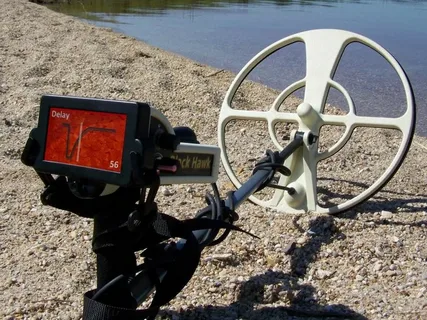Mining industry plays a crucial role in the global economy, providing essential raw materials for numerous industries. The exploration of mining’s economic impact has become increasingly important, as it affects various aspects of the economy, including employment, trade, and overall economic development. By delving into the economic impact of the mining industry, we can better understand the industry’s significance and its contribution to economic growth. This paper aims to explore the economic impact of the mining industry, shedding light on its implications for the economy.
The economic impact of the mining industry is significant and multifaceted. It includes direct contributions to employment, income, and local infrastructure development in mining communities, as well as indirect effects on related industries and the broader economy. Mining companies often play a crucial role in providing jobs, supporting local businesses, and contributing to government revenue through taxes and royalties. At the same time, the industry can also have environmental and social impacts that need to be carefully managed and mitigated. Understanding and analyzing the economic impact of mining is essential for policymakers, stakeholders, and communities to make informed decisions about resource development and sustainability.
The Impact of New Technology on the Mining Industry

The impact of new technology on the mining industry has been substantial. Advancements in technology have revolutionized the way mining operations are carried out, increasing efficiency, safety, and productivity.
One significant advancement is the use of autonomous vehicles and drones, which have improved safety and reduced the risk of accidents for workers. These technologies have also increased productivity by allowing mines to operate 24/7 without the need for human intervention.
Additionally, new technology has allowed for more precise exploration and extraction methods, resulting in higher yields of minerals and metals. This has enabled mining companies to access previously inaccessible or uneconomical reserves, ultimately extending the lifespan of mines.
Furthermore, the use of advanced data analytics and machine learning has enabled mining companies to optimize their operations, reduce costs, and improve decision-making processes. This has been particularly beneficial in optimizing the use of resources and reducing environmental impact.
Overall, the impact of new technology on the mining industry has been transformative, leading to significant improvements in safety, productivity, and sustainability. As technology continues to advance, the mining industry is likely to see further enhancements in the years to come.
The Environmental Challenges Facing the Mining Industry

There are several environmental challenges facing the mining industry, including water pollution, habitat destruction, and air pollution. Mining operations often require large amounts of water, which can lead to the contamination of local water sources through the discharge of toxic chemicals and heavy metals. Habitat destruction occurs when mining activities disrupt or destroy natural ecosystems, leading to a loss of biodiversity. Air pollution is also a significant issue, as mining operations can release particulate matter and other pollutants into the atmosphere, impacting air quality and public health. Additionally, the process of extracting and processing minerals can contribute to greenhouse gas emissions and climate change. Addressing these environmental challenges requires responsible mining practices, technological innovation, and strong regulatory oversight.
The Future of Jobs in the Mining Industry

The future of jobs in the mining industry is expected to be shaped by several key factors. Technological advancements, such as automation and artificial intelligence, are likely to lead to changes in the skill sets required for various roles in the sector. Additionally, the shift towards sustainable and environmentally friendly mining practices may create new job opportunities in areas such as resource management and renewable energy. It is also anticipated that there will be a greater focus on diversity and inclusion within the industry, leading to more opportunities for underrepresented groups. Overall, while the nature of jobs in the mining industry may evolve, there are likely to be continued opportunities for skilled workers in this field.
The Economic Importance of the Mining Industry

The mining industry plays a crucial role in the economy by providing essential raw materials for manufacturing, construction, and energy production. It is a significant contributor to global GDP and employment, particularly in resource-rich countries. The industry also generates substantial revenue for governments through taxes, royalties, and other fees.
Mining activities can stimulate economic growth in local communities by creating jobs and providing opportunities for small businesses to supply goods and services. Additionally, the industry can lead to infrastructure development, such as roads and ports, which can benefit other sectors of the economy.
In many developing countries, mining is the primary source of foreign direct investment and export earnings, which can help alleviate poverty and drive development. However, the environmental and social impacts of mining must be carefully managed to ensure sustainable and responsible practices. Overall, the mining industry is a vital component of the global economy, with far-reaching economic implications.
Mining Industry Regulations and Compliance

Mining industry regulations and compliance are critical for ensuring safe and sustainable mining practices. These regulations are set in place by government agencies to oversee mining operations and to protect the environment, workers, and surrounding communities. They cover a range of areas including environmental impact assessments, waste management, air and water quality standards, safety protocols, and community engagement. Compliance with these regulations is essential for obtaining and maintaining mining permits and licenses, and for avoiding legal and financial penalties. Additionally, companies in the mining industry may also be subject to international standards such as those set by the International Labour Organization and the World Health Organization. Overall, adherence to mining industry regulations and compliance is crucial for the responsible and ethical operations of mining companies.
The Role of Women in the Mining Industry
See also: gold detector
Women have historically been underrepresented in the mining industry, making up only a small percentage of the workforce. However, there has been a push in recent years to increase the participation of women in the industry. This is due to the recognition of the valuable contributions that women can make to the field, as well as a desire to promote diversity and gender equality.
Women are increasingly being employed in various roles within the mining industry, including as geologists, engineers, environmental scientists, and in management positions. Their presence in these roles has been shown to bring different perspectives and approaches to problem-solving, as well as to improve overall workplace dynamics.
Efforts to support and encourage women in the mining industry include mentorship programs, networking groups, and initiatives to address barriers such as workplace discrimination and safety concerns. There is also a growing emphasis on providing training and education opportunities for women to enter and advance in mining-related careers.
Despite these advancements, there are still challenges that women face in the mining industry, including a lack of representation in leadership positions and concerns about workplace safety and culture. However, steps are being taken to address these issues and promote a more inclusive and equitable environment for women in mining.
Trends and Innovations in the Mining Industry
Some trends and innovations in the mining industry include the use of autonomous equipment and vehicles, advanced data analytics and artificial intelligence for predictive maintenance and operations optimization, adoption of renewable energy sources to reduce environmental impact, implementation of blockchain technology for supply chain transparency and efficiency, and the development of new extraction and processing techniques to improve resource recovery and overall sustainability. Additionally, there is a growing focus on safety and health in mining operations, with the use of wearable technology and real-time monitoring systems to prevent accidents and ensure the well-being of workers. Overall, the mining industry is constantly evolving and embracing new technologies to improve efficiency, reduce costs, and minimize its environmental footprint.
The Global Influence of the Mining Industry
The mining industry has a significant global influence, as it plays a crucial role in the economy of many countries. This industry is responsible for the extraction of valuable resources such as coal, minerals, and precious metals, which are used in various sectors such as manufacturing, infrastructure development, and energy production.
The global influence of the mining industry can be seen in its contribution to the GDP of countries, as well as its impact on employment and trade. Many nations rely on the revenue generated from mining activities to support their economic growth and development.
Moreover, the mining industry also has a considerable environmental and social impact. The extraction and processing of minerals can result in deforestation, water pollution, and habitat destruction. It can also lead to conflicts over land rights and displacement of local communities.
Despite these challenges, the mining industry continues to be a major player in the global economy, driving innovation and technological advancements in resource extraction and contributing to the supply chain of various industries worldwide. However, efforts are being made to promote sustainable mining practices and minimize the negative impact on the environment and communities.
Mining Industry Safety and Risk Management
The mining industry poses various safety and health risks due to the nature of work, including extreme working conditions, heavy machinery, and exposure to hazardous materials. Therefore, ensuring safety measures and effective risk management is crucial in this industry to prevent accidents, injuries, and long-term health issues.
Mining companies are required to adhere to strict regulations and standards set by government authorities to ensure the safety and well-being of their employees. This includes providing proper training, protective equipment, and implementing safety protocols to minimize potential risks.
Risk management in the mining industry involves identifying potential hazards, assessing the likelihood and severity of these hazards, and implementing controls to mitigate or eliminate them. This may involve conducting regular safety inspections, establishing emergency response plans, and providing ongoing training to employees.
Furthermore, the use of advanced technologies such as automated machinery, real-time monitoring systems, and data analytics has significantly improved safety and risk management in the mining industry. These technologies help in identifying potential risks, providing early warnings, and enhancing overall safety measures.
Overall, the mining industry places a high priority on safety and risk management to ensure the well-being of its workforce and minimize the impact of potential hazards. This involves the implementation of stringent safety protocols, regular training, and the use of advanced technologies to effectively manage and mitigate risks.
The Role of Automation in the Mining Industry
Automation in the mining industry has significantly improved efficiency, safety, and productivity. It has been instrumental in reducing labor costs and optimizing operations. Automation technologies such as autonomous vehicles, drones, and remote control systems have enabled mining companies to access and extract resources in areas that were previously uneconomical or hazardous. Additionally, automated technologies have helped to minimize human exposure to dangerous working conditions and reduce the environmental impact of mining activities. Overall, automation has become an essential component of modern mining operations, allowing for greater operational control and enhanced safety measures.

